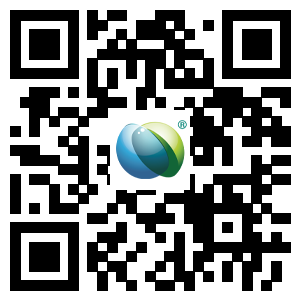Understanding Seismograph Geophones: Key Instruments for Environmental Monitoring
May 07,2025
Seismograph geophones are essential tools widely used in environmental monitoring to detect and record ground vibrations caused by seismic activities, including earthquakes and human-induced vibrations. These sensitive instruments convert ground motion into electrical signals, which can then be analyzed to assess seismic events' magnitude and frequency. Understanding how these devices work and the
Seismograph geophones are essential tools widely used in environmental monitoring to detect and record ground vibrations caused by seismic activities, including earthquakes and human-induced vibrations. These sensitive instruments convert ground motion into electrical signals, which can then be analyzed to assess seismic events' magnitude and frequency. Understanding how these devices work and their applications can significantly enhance the ability to monitor geological stability and environmental conditions.
At the core of a seismograph geophone is a mass-spring system. When vibrations occur, the mass moves relative to the ground, generating an electrical signal proportional to the ground motion. This design enables geophones to provide highly accurate readings of seismic waves, making them invaluable for researchers, engineers, and environmental scientists. The data collected can be instrumental in hazard assessment, resource exploration, and monitoring subsurface conditions.
One of the primary applications of geophones is in the field of earthquake monitoring. By deploying a network of these devices, seismologists can create a comprehensive picture of seismic activity in a region. This data helps in understanding the frequency and intensity of earthquakes, thereby aiding in disaster preparedness and risk mitigation efforts. Moreover, geophones can monitor induced seismicity resulting from human activities such as mining, reservoir-induced seismicity, and hydraulic fracturing.
In addition to earthquake monitoring, seismograph geophones are used in various environmental assessments. For instance, they play a critical role in monitoring landslides, assessing ground stability in construction projects, and evaluating the impacts of natural disasters. By providing real-time data, geophones enable timely decision-making and effective management of environmental risks.
The integration of seismograph geophones with modern technologies enhances their functionality. Many devices now feature digital recording capabilities, allowing for the storage and analysis of vast amounts of data. Additionally, advancements in wireless communication technologies enable remote monitoring, making it easier for professionals to access and interpret data from various locations.
As environmental concerns continue to grow, the importance of accurate monitoring tools like seismograph geophones cannot be overstated. They provide essential insights into earth dynamics, helping professionals make informed decisions that protect both people and the environment. Understanding these devices' operation and applications empowers industries and researchers to leverage their capabilities for sustainable development and disaster preparedness.
In conclusion, seismograph geophones are more than just instruments for measuring vibrations; they are vital components in the ongoing effort to understand and manage our environment. Their capability to monitor seismic activity and other ground movements makes them indispensable in today's rapidly changing world.
At the core of a seismograph geophone is a mass-spring system. When vibrations occur, the mass moves relative to the ground, generating an electrical signal proportional to the ground motion. This design enables geophones to provide highly accurate readings of seismic waves, making them invaluable for researchers, engineers, and environmental scientists. The data collected can be instrumental in hazard assessment, resource exploration, and monitoring subsurface conditions.
One of the primary applications of geophones is in the field of earthquake monitoring. By deploying a network of these devices, seismologists can create a comprehensive picture of seismic activity in a region. This data helps in understanding the frequency and intensity of earthquakes, thereby aiding in disaster preparedness and risk mitigation efforts. Moreover, geophones can monitor induced seismicity resulting from human activities such as mining, reservoir-induced seismicity, and hydraulic fracturing.
In addition to earthquake monitoring, seismograph geophones are used in various environmental assessments. For instance, they play a critical role in monitoring landslides, assessing ground stability in construction projects, and evaluating the impacts of natural disasters. By providing real-time data, geophones enable timely decision-making and effective management of environmental risks.
The integration of seismograph geophones with modern technologies enhances their functionality. Many devices now feature digital recording capabilities, allowing for the storage and analysis of vast amounts of data. Additionally, advancements in wireless communication technologies enable remote monitoring, making it easier for professionals to access and interpret data from various locations.
As environmental concerns continue to grow, the importance of accurate monitoring tools like seismograph geophones cannot be overstated. They provide essential insights into earth dynamics, helping professionals make informed decisions that protect both people and the environment. Understanding these devices' operation and applications empowers industries and researchers to leverage their capabilities for sustainable development and disaster preparedness.
In conclusion, seismograph geophones are more than just instruments for measuring vibrations; they are vital components in the ongoing effort to understand and manage our environment. Their capability to monitor seismic activity and other ground movements makes them indispensable in today's rapidly changing world.
BLOG
CONTACT
Tel: 0086-0551-65327898 / 65327899
Fax: 0086-0551-65327899
E-mail: hfgwe@hfgwe.com
Add: 9th Floor, Building A, G3, Phase II, Innovation Industry Park,No. 2800 Innovation Avenue, High-tech Zone, Hefei city,Anhui Province, China

Mobile website
Hefei Guowei Electronics Co., Ltd.
Subscribe Us
We will contact you within one working day. Please pay attention to your email.
CopyRight:Hefei Guowei Electronics Co., Ltd. Powered by 300.cn SEO






